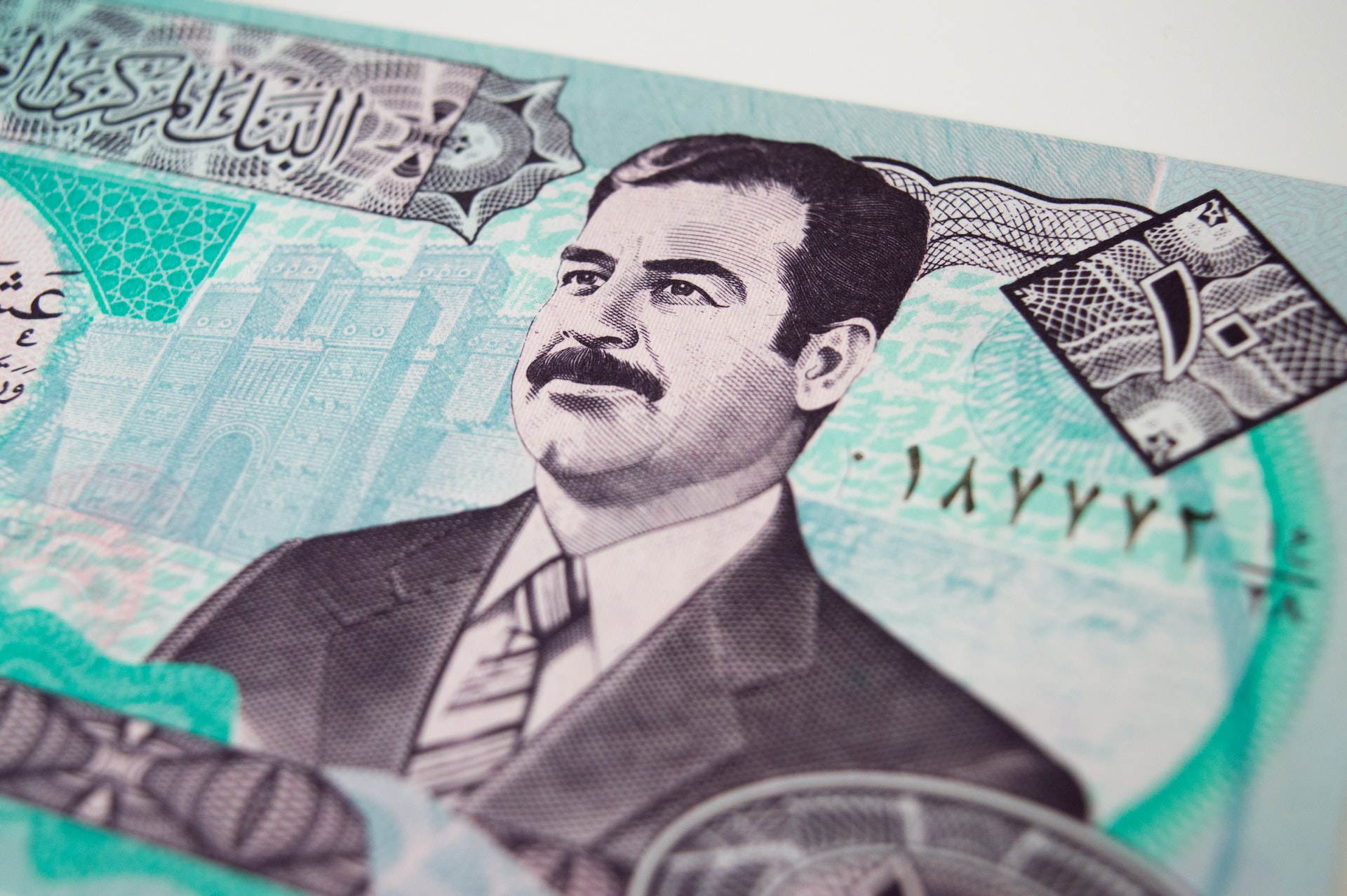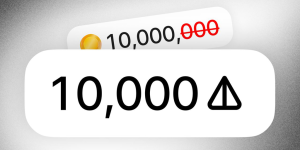What is the Petrodollar System & Why Could Bitcoin Fix It?

[ad_1]

In a world where economies depend on oil and the resource is predominately denominated in US dollars, the United States has acquired immense power for itself. But how long can this power last, and can bitcoin fix today’s system called the petrodollar system?
This guide will explore the petrodollar system, how it was established, how it’s been challenged, and how bitcoin could fix it.
What Is the Petrodollar System?
The petrodollar system refers to the global practice of trading oil for US dollars. Oil-importing countries pay oil-producing countries in dollars, which is why this arrangement is referred to as the petrodollar trade.
The system originated from a 1970s agreement where it was agreed that the US would provide weapons to Saudi Arabia, and in return, the latter would carry out crude oil sales in USD. Following this, the petrodollar system was established and, today, applies to members of the Organization of the Petroleum Exporting Countries (OPEC), Middle Eastern countries, and other nations that export oil.
The History of the Petrodollar System
Before the petrodollar system was established, Allied nations (an alliance of 44 nations) entered into the Bretton Woods Agreement in 1944. The agreement allowed countries to fix the exchange rates of their currencies to USD, giving them a chance to gradually shift from the gold to the dollar standard.
The US dollar was chosen because the United States had the largest gold stock in the world. Hence, no other country had enough gold to back its own currency. This meant that the global financial became centered around the dollar, while the dollar was pegged to gold.
Central banks and foreign governments were also guaranteed the ability to convert dollars into gold. The dollar’s value was $35 for every ounce of gold. The allied nations also formed the International Monetary Fund (IMF) to make world currencies stable, as well as the World Bank to help emerging markets.
However, the demand for dollars was growing, but, as became increasingly the case, the backing commodity, gold, was not keeping up. This pushed inflation up in the late 60s, putting downward pressure on the dollar’s value. At the same time, the United States suffered from unemployment and poor economic growth. Moreover, central banks across the globe started exchanging their dollar reserves for gold since the value of the dollar was plummeting.
In response to the oversupply of dollars, Richard Nixon adjusted the dollar’s value to $38 per ounce of gold, but this didn’t work. As a result, he had no choice but to stop backing the dollar with gold. This took place in 1971, when Nixon closed the so-called gold window. With it, he also ended the nations’ ability to exchange dollars for gold with each other.
With the Bretton system coming to an end, Nixon had to find a solution to find a new “backing” that would safeguard the dollar’s value from further decline. So, he made a deal with Saudi Arabia in 1974. The terms of the deal were that Saudi Arabia would sell oil in dollars. In return, the US would give the kingdom military aid and weapons for its oil fields. Furthermore, Saudi Arabia would reinvest its dollar profits into the US by buying US treasury bills and bonds. Hence, this deal has allowed Saudi Arabia to become one of the largest creditors to the US.
Afterward, other oil-producing countries adopted the petrodollar system, enabling them to export oil in USD. Today, the dollar contributes significantly to the international economy because of its use in the oil and gas markets. Hence, most central banks hold the dollar as a reserve because the dollar has turned into the international reserve and trade currency.
Countries That Have Challenged the Petrodollar System

While petrodollars have been used as payment for oil over the years, countries like Russia and China are now challenging this system.
For instance, Russia wants to denominate its commodity sales in another currency that is not the US dollar. Preferably in its own currency, the rubel. Moreover, the central bank of Russia has also been buying gold, diversifying away from the US dollar. There is also some speculation that bitcoin could play a part.
On the other hand, China wants to replace the USD with a petroyuan. As a matter of fact, China has been in talks with Saudi Arabia to price its oil sales to China in yuan. These talks have been on and off for years but are gaining momentum as Saudi Arabia’s unhappiness with the US increases. The Middle Eastern country is angry due to the failure of the US to support them in their intervention in Yemen’s civil war. China’s yuan could get a major boost if these talks prove to be successful, especially since China buys over 25% of Saudi Arabia’s oil exports.
Russia and China have reportedly been accumulating gold in recent years, thereby putting them on the top ten list of countries with the largest gold reserves. In 2017, the Shanghai International Energy Exchange (INE) introduced crude oil futures contracts denominated in yuan. These contracts allow oil producers to exchange yuan for physical gold.
Libya has also challenged the petrodollar system in the past. African countries should have been encouraged to purchase African oil using the Libyan dinar and silver dirham under the leadership of al-Qadhafi. These plans didn’t come to fruition, though, due to the US/NATO invasion of Libya that started in 2011.
“Libya’s Qadhafi (African Union 2009 Chair) conceived and financed a plan to unify the sovereign States of Africa with one gold currency (United States of Africa). […] African oil-producing nations were planning to abandon the petrodollar, and demand gold payment for oil/gas,” Denise Rhyne wrote in a blog.
Conversely, Iraq’s oil exports were paid for in euros in the early 2000s under Saddam Hussein’s leadership. This was followed by a regime change after Hussein was captured by a US-led coalition in 2003. Hussein was executed in 2006.
How Does the Petrodollar System Work?
Oil is a precious commodity that every country needs. For almost 50 years, every oil importer has needed US dollars to pay for oil imports, giving them a reason to hold the currency in large quantities.
This demand has been naturally strengthening the value of the dollar.
Oil-producing nations may find themselves with a surplus of dollars after selling oil. This creates a chance for them to “recycle” the petrodollars by investing them. As it stands, a lot of dollars held as a surplus find their way into US-dollar-denominated assets, most often US treasury assets.
As such, the petrodollar system has made the market for the dollar and US treasuries more liquid while enabling the US government to artificially maintain low-interest rates and financing large fiscal deficits.
This means that the petrodollar system is crucial to the economy of the US, which is why the nation seems to be keen on protecting it.
The Future of the Petrodollar System
The petrodollar has served the United States well for decades. Here are the benefits the country has reaped:
The ability to fund fiscal deficits at low-interest rates.Enormous influence over the entire global financial market.A regular source of liquidity.A flow of foreign capital via the “recycling” of petrodollars.Consistent trade deficits — a country runs a trade deficit when it imports more than it exports. A trade deficit could be a sign of a strong economy.
Nevertheless, these advantages have come at a cost. The US has had to protect the petrodollar system from any country or person that challenged it. This has led to political meddling, war, and deaths over the years.
For instance, it’s alleged that the war against al-Qadhafi and Saddam Hussein may have been prompted by more than humanitarian efforts, hinting that the US was also protecting the petrodollar system.
Despite these efforts, the end of the dollar’s dominance may have already begun. The continued deficit running by the United States means that countries may decide to downgrade the dollar’s value. As a result, the purchasing power of the currency will sink. This is something that has been happening for years. It is for this reason that Saddam Hussein dumped the dollar for the Euro in the early 2000s.
Moreover, the rising concern for global warming has made nations turn to more sustainable sources of energy. This could significantly minimize oil demand and, in consequence, petrodollars. Also, the number of dollars held in reserves is slowly declining based on data from the IMF.
The United States has also been having strained relations with top economic powers like Russia and China. For example, Russia’s Ukraine invasion saw the US seize Russia’s USD reserves, kicking the country out of the dollar system.
Also, the United States has sent similar threats to China over the years, preventing it from doing things the former didn’t want it to do (like invading Taiwan, for example). Living under such threats isn’t easy for these two countries that also want to dominate the world. Therefore, this is why there are hasting their plans to shift to another currency when trading oil.
How Could Bitcoin Fix the Petrodollar System?
The emergence of cryptocurrencies has some experts predicting that Bitcoin could replace the petrodollar system. Russia has also announced its consideration of the digital currency in oil trading.
So, why bitcoin?
Bitcoin is Decentralized
As we have learned from the harsh realities of the petrodollar system for anyone opposing it, having a central authority at the center of the oil market is detrimental. The US has used the power of its currency to invade countries, issue threats, and execute those threats.
The dollar is still widely used across the globe. This means any country that tries to switch to a different currency will have many difficulties navigating. So, the world is highly dependent on the dollar, and the US knows this. As a result, it can bend the world to its will. This system wouldn’t change if another currency took the place of the dollar. In any case, it could be worse if a global reserve currency was under the control of a less democratic nation than the US.
With bitcoin, however, there’s no central authority. It is fully decentralized and does not rely on “trusted” authorities. That means no one can confiscate the BTC reserves of another country since it’s not associated with any government.
Moreover, bitcoin isn’t tied to any known person, which means no government can use them to control its code. It could also bring to an end the system of one fiat currency dominating global markets.
Bitcoin is a Store of Value
The economic uncertainty during the COVID-19 outbreak in 2020 led to more demand for bitcoin as a store of value. Several South American countries were recording high trading volumes while exchanges like Coinbase and Kraken were hiring.
This showed that bitcoin could indeed play a store of value role during a crisis, which could push more nation-states to adopt the currency as cash reserves or for their oil trade.
Bitcoin is Disinflationary
Bitcoin has a limited supply of 21 million coins. This means its value is likely to increase with time as more people begin to appreciate its decentralized and store of value benefits. Therefore, BTC is different from the US dollar, whose value has been decreasing over the years as its purchasing power reduces because of an ever-greater supply coming onto the markets.
Bitcoin Potentially Offers Above-Average Returns
Despite the ongoing crypto bear market, which has seen the price of BTC fall to the $16,000 mark, bitcoin has the potential to offer above-average returns. To illustrate, if you had invested $1,000 worth of bitcoin since December 2012, your total investment would be worth $1,581,578.17. This is an annualized return of 108.89%.
Hence, if used a global reserve currency, countries could potentially enjoy a higher return on their cash reserves than if they were to stick their money into US treasuries in the long term.
The Bottom Line
Bitcoin has the potential to fix the petrodollar system. But before this can happen, the digital currency will have to become less volatile — this could potentially be solved when it achieves widespread adoption.
It may also gain the support of the United States since the nation may prefer it over the ruble and yuan, should Russia and China’s currencies play an increasingly important role in the oil trade in the future. Essentially, BTC may appear as the “lesser evil” in the eyes of the US.
Nonetheless, only time can tell what will happen in the future. But the collapse of the petrodollar system seems destined to happen at some point in the future as there are an increasing number of forces opposing it, including Bitcoin.
[ad_2]
Source link










